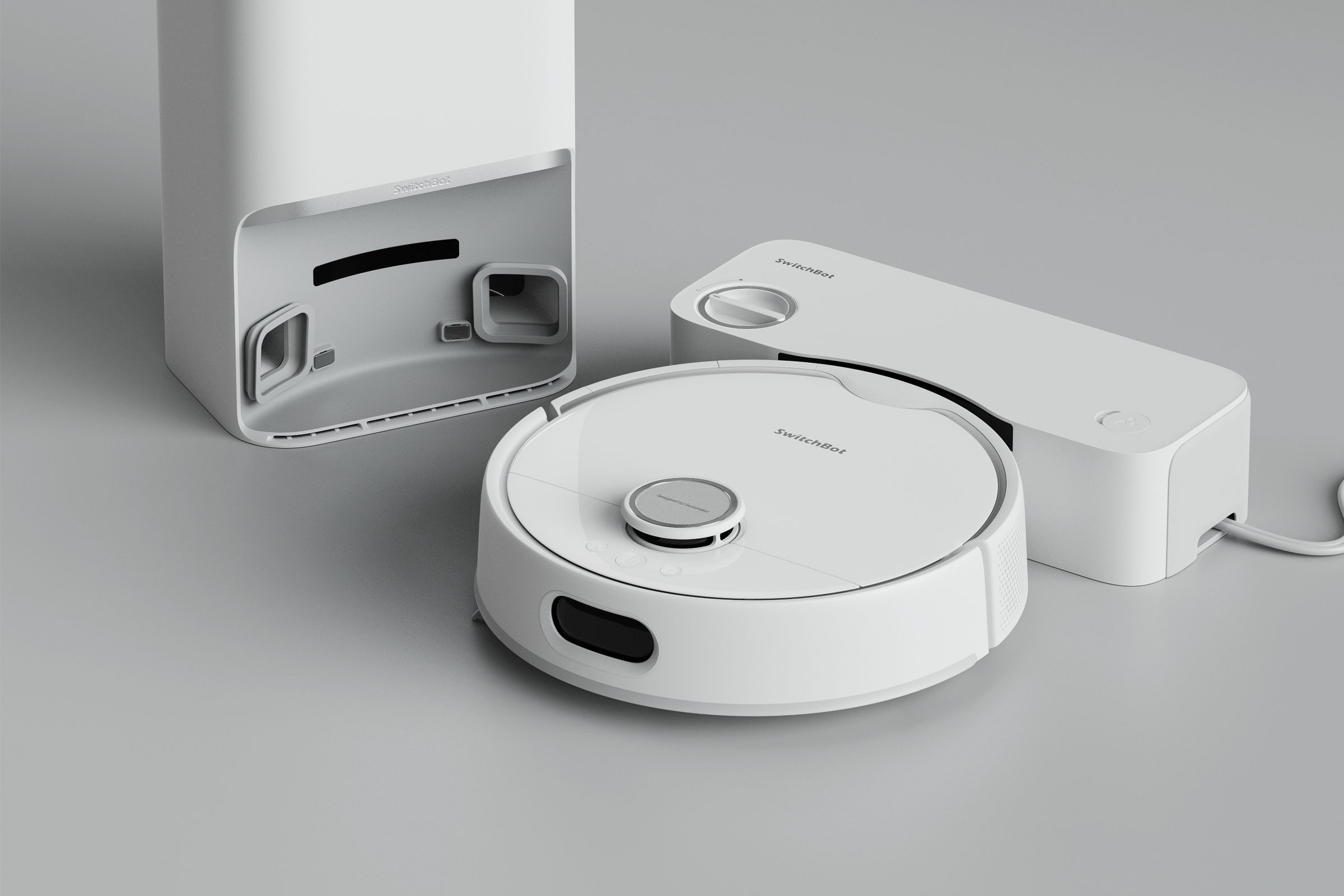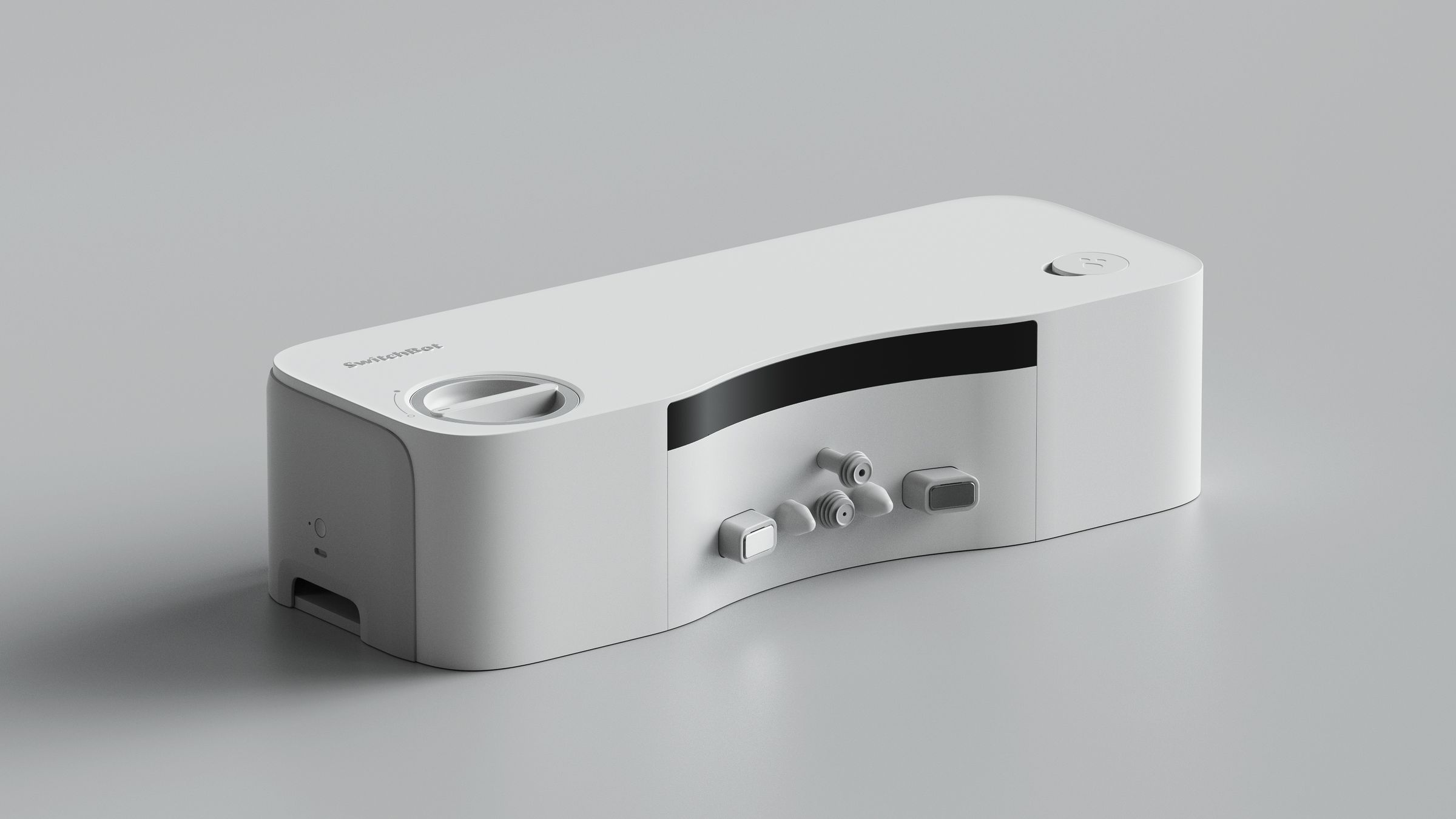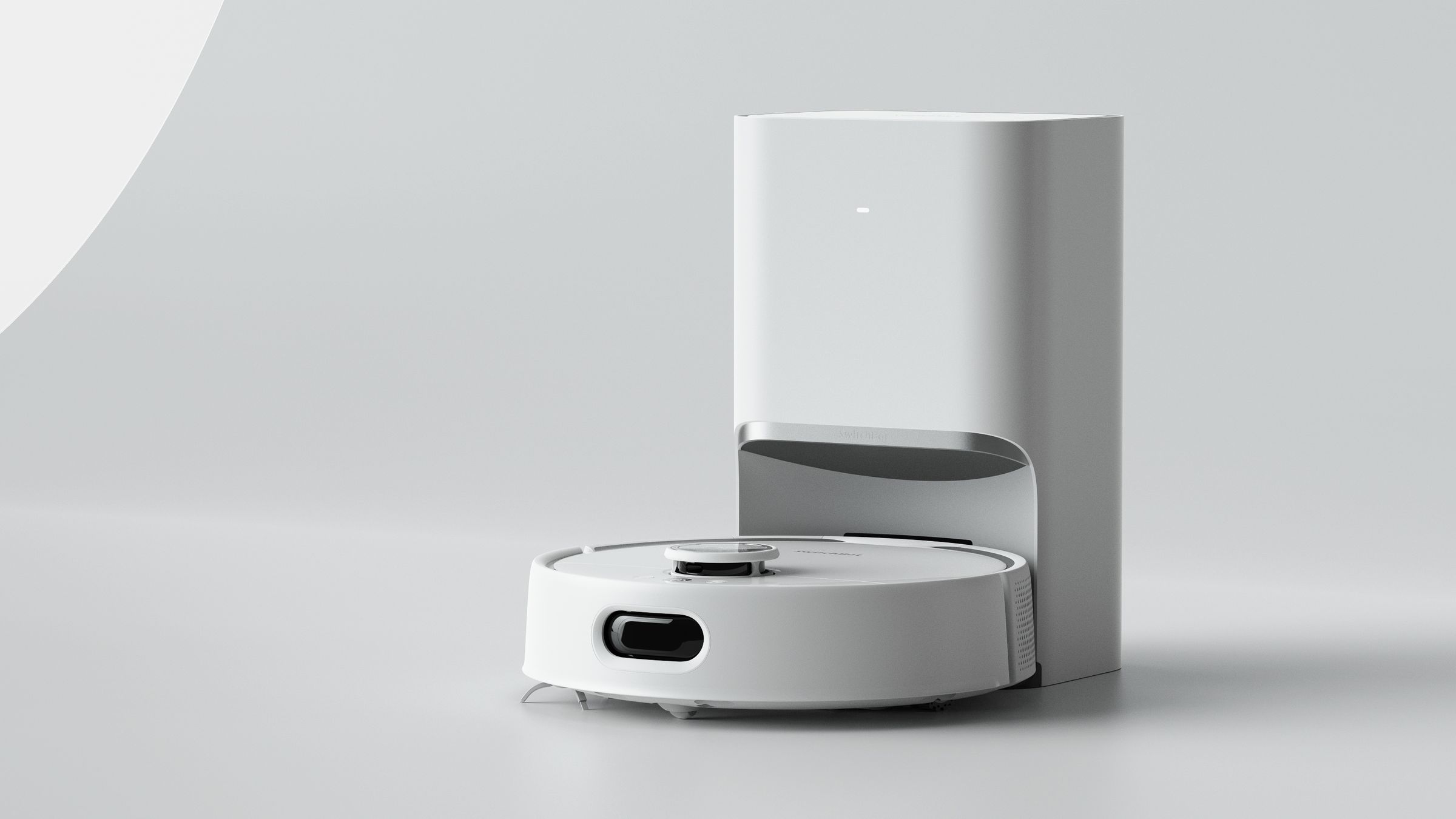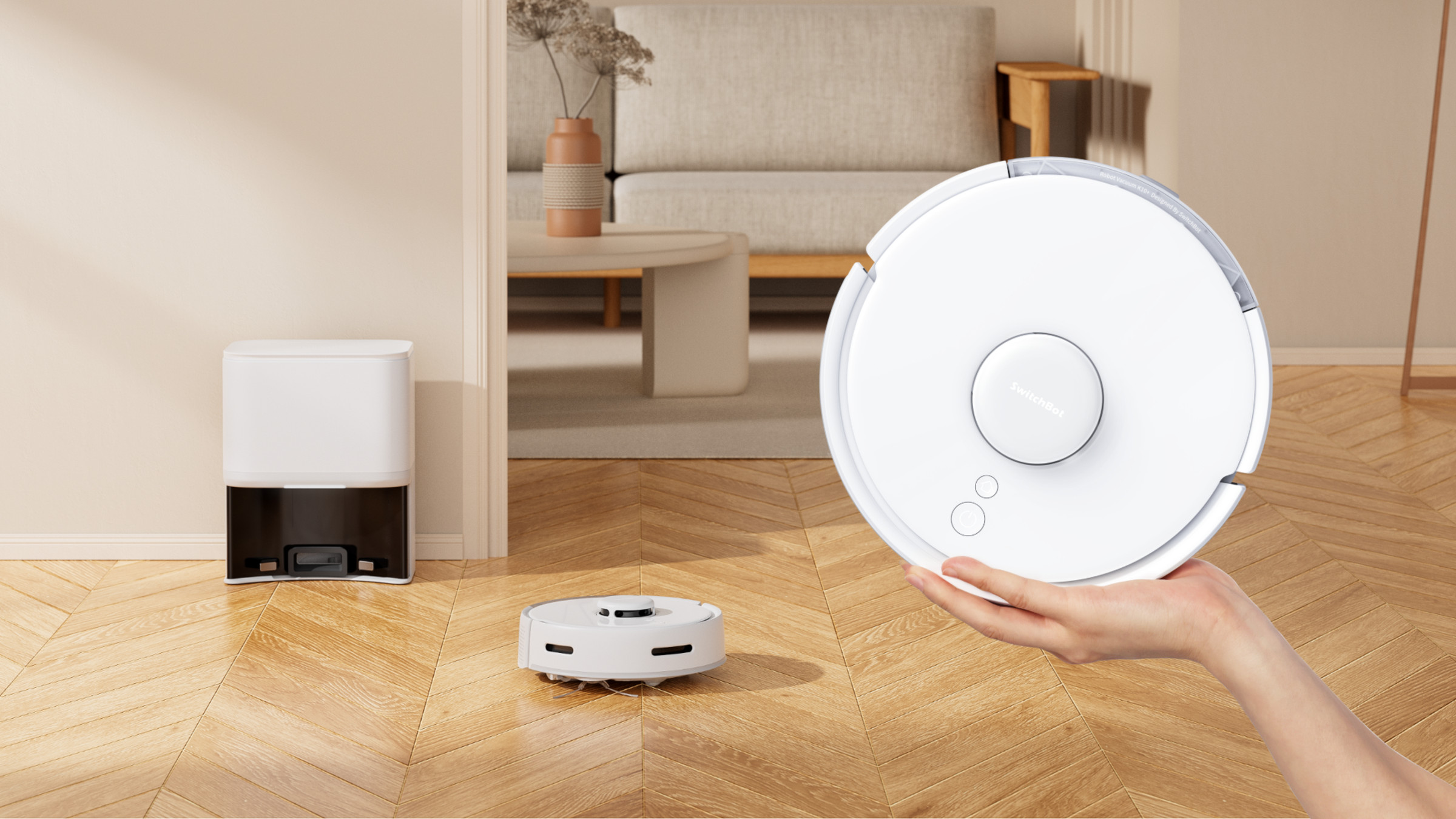The SwitchBot S10 hooks into your plumbing for a virtually hands-free sweeping and mopping experience. It’s also the first robo vac that can refill a humidifier.
Share this story

Smart home robotics company SwitchBot — of robot finger fame — has come up with another ingenious solution for automating boring chores in your home. This one is a sizable leap toward a Rosie the Robot vision of a fully autonomous robot house cleaner, though without the personality. The SwitchBot S10 is a new robot vacuum and mop that autonomously drains and refills its dirty and clean water tanks using a battery-powered water station that hooks directly into your plumbing.
Combined with an auto-empty charging dock that dries the mop, the S10 is the most fully automated floor cleaner I’ve seen. You won’t need to refill its mopping tank, deal with emptying dirty water post-clean, or mess with its mops. The only dirty work you need to do is empty its dust bag after about 70 days (according to the company). Otherwise, it should trundle around your home, mopping and sweeping until the cows come home.
The yet to be priced S10 is launching next week at IFA and is slated for release on Kickstarter in October. It can use its plumbing tricks to autonomously refill a new humidifier the company is also debuting at the Berlin tech trade show. And SwitchBot has plans to introduce a dehumidifier that the S10 could empty.
Sean Tan, SwitchBot’s PR manager, gave me an exclusive preview of the S10 ahead of IFA, and while the product is still in development, he showed me a working prototype of what the company claims is an industry-first auto-refilling and draining water station system.
A robot vacuum and mop with an auto-empty charging dock, the S10 comes with a separate compact battery-powered water station that you install in your kitchen (or laundry room or bathroom) and connect to your water inlet and drainage pipes.
The S10’s own battery functions as a power source for the water station, providing reverse power to the station when it fills up with water, so you don’t need to plug it in.
While ingenious, the idea of connecting a robot mop right into your plumbing seems quite obvious now and a much better solution than the hulking great “auto-empty wash, fill, and dry docks” popularized by companies like Roborock. These take up a lot of space, look kind of ugly, and require you to lug giant gallon-size water jugs from the sink to the robot on a weekly basis.
The plumbing concept isn’t entirely new. Narwhal has a similar idea for its Freo model, although that requires an open drain in your home, has a more complicated installation, and doesn’t include an auto-empty bin.
What really intrigues me about this product is that it’s a multitasking home robot. Using the robot’s now endless supply of water and its sizable onboard battery to refill other household appliances is a clever utilization of those resources. Maybe one day, it could even water your plants and fill up the dog’s water bowl. Perhaps you could pop your smartphone on it for a quick power-up.
Tan showed me a video demo of the installation, and it looks slightly more involved than installing a bidet toilet seat but not complicated enough to require a plumber. The company plans to offer an external tank solution if you don’t have a way to hook it into your plumbing directly.
Crowdfunding is a chaotic field by nature: companies looking for funding tend to make big promises. According to a study run by Kickstarter in 2015, roughly 1 in 10 “successful” products that reach their funding goals fail to actually deliver rewards. Of the ones that do deliver, delays, missed deadlines, or overpromised ideas mean that there’s often disappointment in store for those products that do get done.
The best defense is to use your best judgment. Ask yourself: does the product look legitimate? Is the company making outlandish claims? Is there a working prototype? Does the company mention existing plans to manufacture and ship finished products? Has it completed a Kickstarter before? And remember: you’re not necessarily buying a product when you back it on a crowdfunding site.
As a vacuum mop, the SwitchBot S10 resembles many of the top-of-the-line bots from the likes of Roborock, Ecovacs, and others. While official specs and pricing won’t be released until next week at IFA, Tan says the S10 will have all the standard features of a high-end robot vac: powerful suction, long runtime, lidar mapping, virtual no-go zones, room-specific cleaning, AI-powered obstacle avoidance, and self-cleaning capabilities.
Interestingly, its roller-style mopping system differs from what other mopping robots use (beyond that it hooks into your plumbing). Tan says water sprays onto the rolling mop as it’s cleaning, cleaning both your floor and the mop at the same time. When the robot detects carpet, the mop retracts into the robot, and the water stops spraying. When the robot returns to the charging dock, the mop will get a quick blow-dry. You don’t need to remove it or wash it manually, as most other robot mops require.
While there’s no pricing yet, with these specs and the unique water feature, plus SwitchBot’s reputation for lower-priced products, I would anticipate a price point of over $1,000. Many of the S10’s high-end competitors cost upward of $1,500.




SwitchBot will have the S10 on show at IFA, which runs from September 1st through September 5th. The Verge will be on the ground in Berlin, so we’ll get some hands-on time with the device and report back with more details.
Alongside the S10, SwitchBot is also bringing the ridiculously cute K10 Plus robot vacuum to the US. (It launched on a crowdfunding platform in Japan earlier this year.) The signature feature of this is its size: at only 3.6 inches high and 9.8 inches wide, it’s perhaps the smallest robot vacuum you’ll be able to buy. Its auto-empty station is similarly small, making it a good option for small apartments or bedrooms.


The K10 Plus has a max 2,500pa suction power and 150-minute runtime and will be available on Amazon and SwitchBot.com in November. No US pricing is available, but it’s listed at 68,880 yen (about $470) in Japan.









